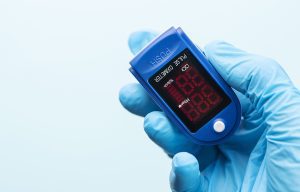Enhancing Usability and User Experience Through Medical Device Design
While the functionality and efficacy of a medical device is of primary importance when going through the design process, it is also important to consider the user experience. Medical devices are used to diagnose, treat, and prevent many different conditions, and as these devices are primarily used by patients, the user experience will make a big difference in how effective the device is.
If the user experience is poor, patients are less likely to actually use the device correctly. When user experience is prioritized during the design process, particularly when usability and ergonomic design is considered, the device is much more successful. When designing the electronic components and PCBs that will be used in medical devices, the patient and their user experience should always be a priority.

Reverse Engineering Optimizes Usability
One of the best ways to design a new medical device that optimizes usability is to reverse engineer a legacy product to determine what in the design works and doesn’t work well for users. One of the advantages of working with an electronic contract manufacturer with a team of onsite engineers is the ability to reverse engineer existing medical devices. Reverse engineering takes a finished product that is either successful or unsuccessful, and dissects it thoroughly to understand the components, structure, and functionality. Everything will be meticulously documented during the process, and any concerns that users had will be addressed on a component-by-component basis. Engineers can then analyze the data to understand how usability can be optimized.
Medical Device Design Enhances User Experience
When you design with user experience in mind, the focus is on the potential perceptions and responses that they may encounter when using the product. While patients and medical professionals understand the benefits of medical devices, when the user experience is not considered and ends up being unpleasant for the patient, it lowers the efficacy of the device.
Interaction determines the user experience, and whatever opinion the user develops of the product is what it is. Not only does a medical device need to demonstrate a high level of usability and accessibility, but the patients and medical professionals must have a positive opinion. By taking an existing or legacy product that has either very high or very low ratings on user experience and putting it through the reverse engineering process, medical device designers can look at things like the interface, layout, heat generation, and any other concerns.

The Design Process is Critical to Patient Safety
Design is essential in developing medical devices that are safe for patient use. Medical devices are highly regulated to prioritize patient safety. Most of these safety concerns are addressed not during the manufacturing process, but at the very earliest stages.
Intuitive design and ergonomic considerations are key to developing medical devices that do not put patients at risk. During the design process, the engineering team will work to understand the user needs, the limitations that may be facing, the critical functions of the device itself, and will identify any potential risks.
These risks are not limited to risk of the device malfunctioning, but also to how user experience can contribute to patient risk. If a patient can put themselves at risk by misusing a device, the device is no longer safe. In the design process, any potential misuse should be identified and planned for to reduce the risk that a patient may cause harm to themselves. Prototyping is an essential step here, as having a functional model can help identify how a patient’s user experience will be with the device.
Designing for User Experience
Designing user friendly devices means thinking about more than functionality without abandoning functionality. Design teams need to look at not only the end goal of the device, but should also look at it from the viewpoint of the patients who will be using that product. In some cases, these two viewpoints may line up nicely, in others, there may need to be more adjustment. However, as the development team will likely not be the ones who are the target market for the medical device, the focus needs to be on the user.
Conducting usability testing on medical devices is the most efficient way to get the best sense of the user experience, identifying where any potential issues may be and taking the time to design the product in a way that meets functionality requirements, regulatory requirements, and allows for the best possible patient outcome.
A successful medical device isn’t just well-designed—it’s engineered with patient outcomes in mind. Medical device development involves multiple layers of complexity, from regulatory compliance to precision manufacturing. Partnering with a qualified electronic contract manufacturer (ECM) ensures that every aspect of your device, from prototyping to production, meets the highest standards of safety, efficacy, and user experience. With expertise in reverse engineering, rigorous testing, and seamless production processes, the right ECM helps bring your device to market efficiently while maintaining the reliability healthcare professionals and patients depend on.
Partnering with Levison Enterprises ensures that every aspect of the design and production process for your next medical device is executed with precision, from component selection to regulatory compliance and final assembly. We bring the expertise, resources, and engineering support needed to streamline development and optimize usability—helping you deliver a high-quality, patient-centered device that stands out in the medical field. Contact us for a quote on your next medical device build.
Start Your Quote Now!